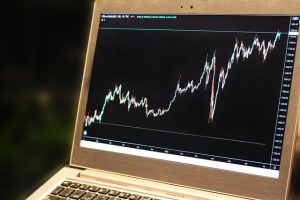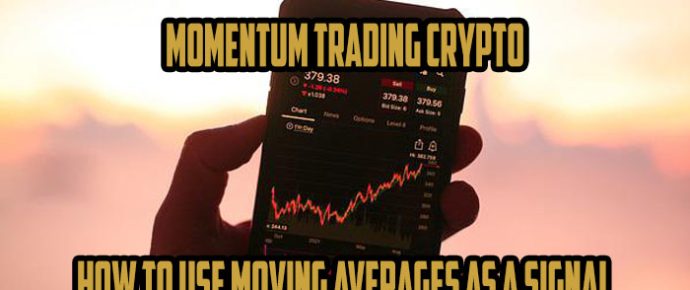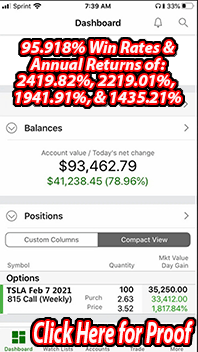Momentum Trading Crypto: How to Use Moving Averages as a Signal
 When it comes to trading cryptocurrencies, one of the most important things to keep in mind is momentum. Just like with any other asset, crypto prices are constantly fluctuating and it can be tough to know when to buy or sell. That’s where moving averages come in. By tracking the average price of an asset over a certain period of time, you can get a better sense of the overall direction it’s moving in.
When it comes to trading cryptocurrencies, one of the most important things to keep in mind is momentum. Just like with any other asset, crypto prices are constantly fluctuating and it can be tough to know when to buy or sell. That’s where moving averages come in. By tracking the average price of an asset over a certain period of time, you can get a better sense of the overall direction it’s moving in.
In the rest of this article, we will learn more about momentum trading and how it works when trading cryptocurrencies.
What is Momentum Trading Crypto?
Momentum trading is a type of trading that focuses on the speed or momentum of price changes. It is based on the belief that prices tend to continue moving in the same direction once they start moving.
Cryptocurrency momentum trading is a strategy that tries to take advantage of short-term price movements in cryptocurrencies. The goal is to buy cryptos that are rising in price and sell them when they reach a peak.
This type of trading can be risky, as prices can move quickly and unexpectedly. It requires knowledge and experience to identify potential opportunities and know when to enter and exit trades. Overall, momentum trading crypto can be a profitable way to trade if done correctly as you are trading in line with an already established trend.
A lot of traders use moving averages to give them an idea of the current momentum of an asset, in addition to watching the current volume of buying and the current volume of selling.
Most traders will use some form of AI tool to let them know when a certain stock or crypto is breaking out and has a lot of momentum. One of the most popular ones is this one here.
 What are Moving Averages?
What are Moving Averages?
Moving averages are one of the most commonly used technical indicators in the market. They are simply a way of smoothing out price action by taking the average of the past X periods. The most common time periods are 10, 20, 50, and 200 days. This makes it easier to identify trends and make trading decisions and gives you an idea of whether the price action is higher than normal for a certain asset (like crypto in this case).
What are the Different Moving Averages?
There are different types of moving averages, but the most common ones used in crypto momentum trading are simple moving averages (SMAs) and exponential moving averages (EMAs).
Simple Moving Averages (SMAs)
A simple moving average (SMA) is an arithmetic moving average calculated by adding recent closing prices and dividing that by the number of time periods in the calculation average. A simple moving average smooths out price data by creating a constantly updated average price. The period of time for the SMA can be any length, but longer timeframes are generally more reliable.
SMAs are popular technical indicators because they are easy to calculate and interpret. It is a lagging indicator which means that it trails behind price movements. SMAs show the trend of an asset over a specific period of time, but they do not predict future prices.
(A lot of brokerages or trading apps will have the option to show the SMA on any charts you pull up.)
Exponential Moving Averages (EMAs)
An exponential moving average (EMA) is a type of moving average that gives more weight to recent prices in an effort to make them more responsive to new information.
The exponential moving average is one of the most popular technical indicators. It is used by traders to identify trend direction and potential reversals. The EMA is also a key input in many different trading systems and strategies.
While there are a number of different ways to calculate an exponential moving average, the most common method applies a weighting factor to the latest data point. This weighting factor is based on the exponent of a number e, which is approximately 2.71828.
The key thing to understand about moving averages is that they lagging indicators. This means that they will always be behind price action. However, this isn’t necessarily a bad thing. In fact, many traders use moving averages as a way to confirm trends.
For example, if the price is above the 200 periods SMA, this is generally considered an uptrend. Conversely, if the price is below the 200 period SMA, this is considered a downtrend.
Another way that traders use moving averages is by looking for crosses. This occurs when two different moving averages cross each other. For example, if the 50-period EMA crosses above the 200-period SMA, this is generally considered a bullish signal.
On the other hand, if the 50-period EMA crosses below the 200-period SMA, this is generally considered a bearish signal.
These are just some of the ways that traders use moving averages as a signal in crypto momentum trading. There are many other ways to use them as well. The important thing is to experiment and find what works best for you.
 How to Choose the Right Moving Average?
How to Choose the Right Moving Average?
When choosing a moving average for momentum trading, it is important to consider the time frame that you will be trading in. For example, if you are a day trader, then you will likely want to use a shorter-term moving average such as the 5-day or 10-day EMA. On the other hand, if you are a swing trader or investor, then you may want to use a longer-term moving average such as the 50-day or 200-day SMA.
Another important consideration when choosing a moving average for momentum trading is the type of market you are trading in. For example, if you are trading in a volatile market, then you may want to use a longer-term moving average such as the 200-day SMA. On the other hand, if you are trading ina more stable market, then shorter-term moving averages such asthe5-dayor10-day EMA may be more appropriate.
Ultimately, there is no “right” moving average to use for momentum trading. It will depend on your individual trading style and the market conditions you are trading in. Experiment with different moving averages and time frames to see which ones work best for you.
What are the Benefits of Using Moving Averages?
If you know how to use the moving averages properly, it will give you an edge in your trading journey and some of that benefits are the following:
- Moving averages smooth out price action by creating a single flowing line that represents the average price of an asset over a set period of time. This makes it easier to identify trends and support/resistance levels.
- Using moving averages can help you stay disciplined in your trading by keeping you from making impulsive decisions based on short-term changes in price.
- Moving averages can also be used as part of a trading system to generate buy and sell signals. For example, if the price is above the 200-day moving average, this could be considered a bullish signal, while if the price is below the 200-day moving average, this could be considered a bearish signal.
 What are the Risks of Using Moving Averages?
What are the Risks of Using Moving Averages?
The main risk of using moving averages as a signal is that they can be lagging indicators. This means that they may not provide an accurate picture of the current market conditions. Additionally, moving averages can be subject to false signals, which can lead to losses.
What are Some Momentum Signal Trading Strategies?
There are many momentum trading strategies, but some of the most popular ones are the following:
1. Crossover
A crossover is when the price of an asset moves from one side of a moving average to the other. This is considered a bullish signal if the price crosses from below to above the moving average, and a bearish signal if it crosses from above to below.
2. MACD
The Moving Average Convergence Divergence (MACD) indicator is a momentum oscillator that measures the difference between two exponential moving averages (EMAs). The MACD line is calculated by subtracting the 26-day EMA from the 12-day EMA. A buy signal is generated when the MACD line crosses above the signal line, and a sell signal is generated when it crosses below.
3. RSI
The Relative Strength Index (RSI) is another momentum oscillator that measures whether an asset is overbought or oversold. An asset is considered overbought when the RSI value rises above 70, and oversold when it falls below 30. A buy signal occurs when the RSI value falls below 30 and then rises back above it, while a sell signal occurs when the RSI value rises above 70 and then falls back below it.
4. Stochastic Oscillator
The Stochastic Oscillator is a momentum indicator that measures the location of the current price relative to the recent high/low range. A buy signal is generated when the %K line crosses above the %D line, and a sell signal is generated when it crosses below.
5. Williams %R
The Williams %R is another momentum oscillator that measures whether an asset is overbought or oversold. It is very similar to the RSI, but instead of using values between 0 and 100, it uses values between -100 and 0. A buy signal occurs when the Williams %R value falls below -80 and then rises back above it, while a sell signal occurs when the value rises above -20 and then falls back below it.
These are just a few examples of momentum trading strategies that use moving averages as a signal. There are many other ways to trade momentum, so be sure to do your own research before making any trades.
Frequently Asked Questions Related to Momentum Trading Crypto
Can you momentum trade Crypto?

The answer is yes, you can momentum trade Crypto. However, it is important to understand the risks involved before doing so. Cryptocurrency prices are highly volatile and can swing up or down very quickly. This makes them a risky investment for those who don't know what they're doing. However, for those who are willing to take the risk, cryptocurrency trading can be extremely profitable. Many people have made a fortune by buying low and selling high. The key to success is to buy when the price is low and sell when it is high. This requires careful timing and knowledge of the market. Those who are new to cryptocurrency trading should take care to educate themselves before investing any money.
What is a momentum portfolio?

A momentum portfolio is a type of investment strategy that looks to capitalize on stocks that are exhibiting strong price momentum. The theory behind momentum investing is that since these stocks have already shown they can outperform the market, they are more likely to continue doing so in the future.
Do momentum traders make money?

Momentum traders are a special breed of investor that seek out stocks that are on the move. These investors believe that they can capitalize on the momentum of a stock to make a profit. But do these traders really make money? There is no easy answer to this question. Some momentum traders are very successful and have made a great deal of money. Others, however, have not been so lucky and have lost money. There are a number of factors that can impact whether or not a momentum trader is successful. The most important factor is undoubtedly skill. A successful momentum trader needs to be able to identify which stocks are likely to continue moving in the desired direction. They also need to be able to buy and sell quickly, without being shaken out by volatile price swings. Another factor that can impact a momentum trader’s success is market conditions.
Is momentum a good investment?

In recent years, the investment strategy known as momentum has become increasingly popular. But is momentum a good investment? There are pros and cons to investing in momentum. On the plus side, momentum investing can lead to high returns. A study by Jegadeesh and Titman found that stocks with the highest past returns tend to outperform the market in the future. On the downside, momentum investing can be riskier than other strategies. Because you're buying stocks that have already gone up in price, you're more likely to lose money if they start falling. And since momentum stocks tend to be volatile, they can experience big swings up and down. So is momentum a good investment? It depends on your goals and risk tolerance. If you're willing to take on more risk for the chance of higher returns, then momentum investing may be right for you.





